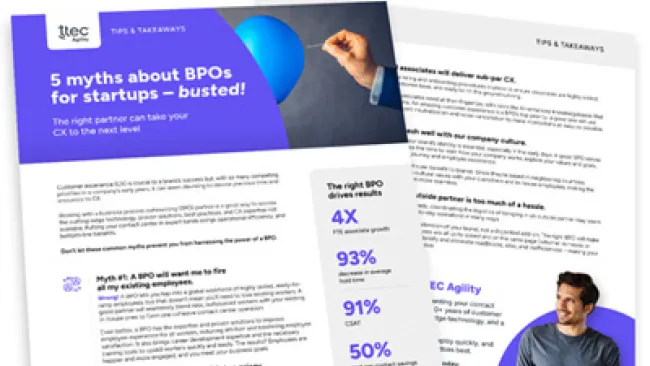Digital transformation accelerated during the pandemic out of necessity to serve a remote customer and employee population. Now we need to ask ourselves, what will these digital experiences look like going forward?
The modern customer wants an efficient digital experience, but it needs a soul. Technology for technology’s sake will not cut it. People want human interaction. Rather than retreat to the old ways of doing business as demand recedes, leading organizations are seizing the opportunity to permanently optimize digital customer channels to create better, effortless customer and employee experiences.
Here’s how to invest in a strategy that creates effortless online experience that is both efficient and authentic in the new digital age:
Make it effortless
Digital experiences should be more intuitive, convenient, and resolve issues faster. In a word – they are more effortless. An effortless experience is built around making every step of the customer journey easy, simple, and impactful. Every click needs to have a reason, the chatbot shouldn’t be a puzzle to uncover, every extra step needs a justification.
Think of the Ubers, Amazons, and Spotifys of the world. People flock to these digitally native organizations because of their seamless experiences. Each brand revolutionized a process simply by making it easier on the customer.
Effortless experiences will be the foundation of our digital transformation. Make no mistake however – there is a lot of effort done behind the scenes with technology, process engineering, UX design, and more to create an effortless experience for customers and employees.
Keep it human
Providing customers with the ability to connect through digital channels is only half the battle. Sometimes we get so caught up in the tools that we forgot that a solid foundation relies on a firm strategy and the people serving your customers. As you continue to capitalize on making your customer experiences effortless, consider these essential building blocks:
The journey: Consider where your customers are in their journey when they contact you online. Normally, they have the expectation that digital channels are the quickest and most efficient way to get information. Make it so.
At the most basic level, analyze how the design of your website makes it as easy as possible to get help. Ask yourself how many steps they need to go through to reach assistance (FAQ, assistance bot, or agent). If it’s difficult to reach help on these channels, then you’re quickly becoming irrelevant.
The employee: An effortless journey is not one-sided. An often-overlooked aspect of customer experience is the employee experience. Consider how the people behind the tools—the agents, data scientists, supervisors, trainers—all come together to create tangible moments during this crisis.
The remote workforce built over the last months had to forego the traditional brick-and-mortar environment. They don’t have the comfort of coworkers and supervisors nearby for assistance. Plan for a future where some of these remote workers may decide to stay home permanently.
The self-service tools you implement with automation and AI will need to act as a digital companion for your at-home agents. That means being able to serve up relevant information to them while they are assisting customers (knowledge assistance). Also, leverage automation to eliminate time consuming clicking and data entry. As contact centers grapple over the number of agents that transition back to centers, there needs to be a shoulder for them to lean on, physically or digitally.
The data: Provide employees with relevant data while they are serving customers to reduce their effort. The ability to use AI and automation to help with simple tasks so they can focus on meaningful tasks is essential. Connect them to the right tools so they can provide information as efficiently as possible. It makes their job easier, and their service all the better.
Creating an optimal customer and employee experience means monitoring and analyzing your daily interactions from beginning to end so you can understand what metrics to track and where to continue to optimize over time.
This will not be a once and done project. Analyzing data gives you the edge on changing customer expectations and on how each experience can be improved by identifying pain points. Show them that you know them.
Setting digital-first into action
This needs to be culminated by automating and optimizing the customer and employee experience together. Your automation tools need to be sophisticated enough to understand the intent of the customer as quickly as possible post contact. Identifying the urgency and complexity of the interaction to determine which resource (self-service AI, agent, etc.) will deliver the most effortless experience for the customer will be crucial. This will help assign the customer to the appropriately resource for the job.
An effortless digital experience approach needs to be supported by infrastructure that is adaptable and flexible enough to pivot when the unexpected happens again in the future. When a crisis strikes again we do not want to be caught off-guard.
How will you build a new digital future?
Those who have invested in making their digital transformation impactful will be able to switch from business as usual into a proactive stance when it matters most. COVID-19 was, and remains, an impactful era, we need to ensure we have learned from our mistakes and wins to provide the best experiences.
When we face uncertainty, humanity goes a long way in creating great moments. Technology in and of itself is never enough. Understand the importance of delivering authenticity while striving to evolve digital channels into an easy and informative option. Now is the time to give the confidence and clarity needed to captivate customers. Let’s begin.

















